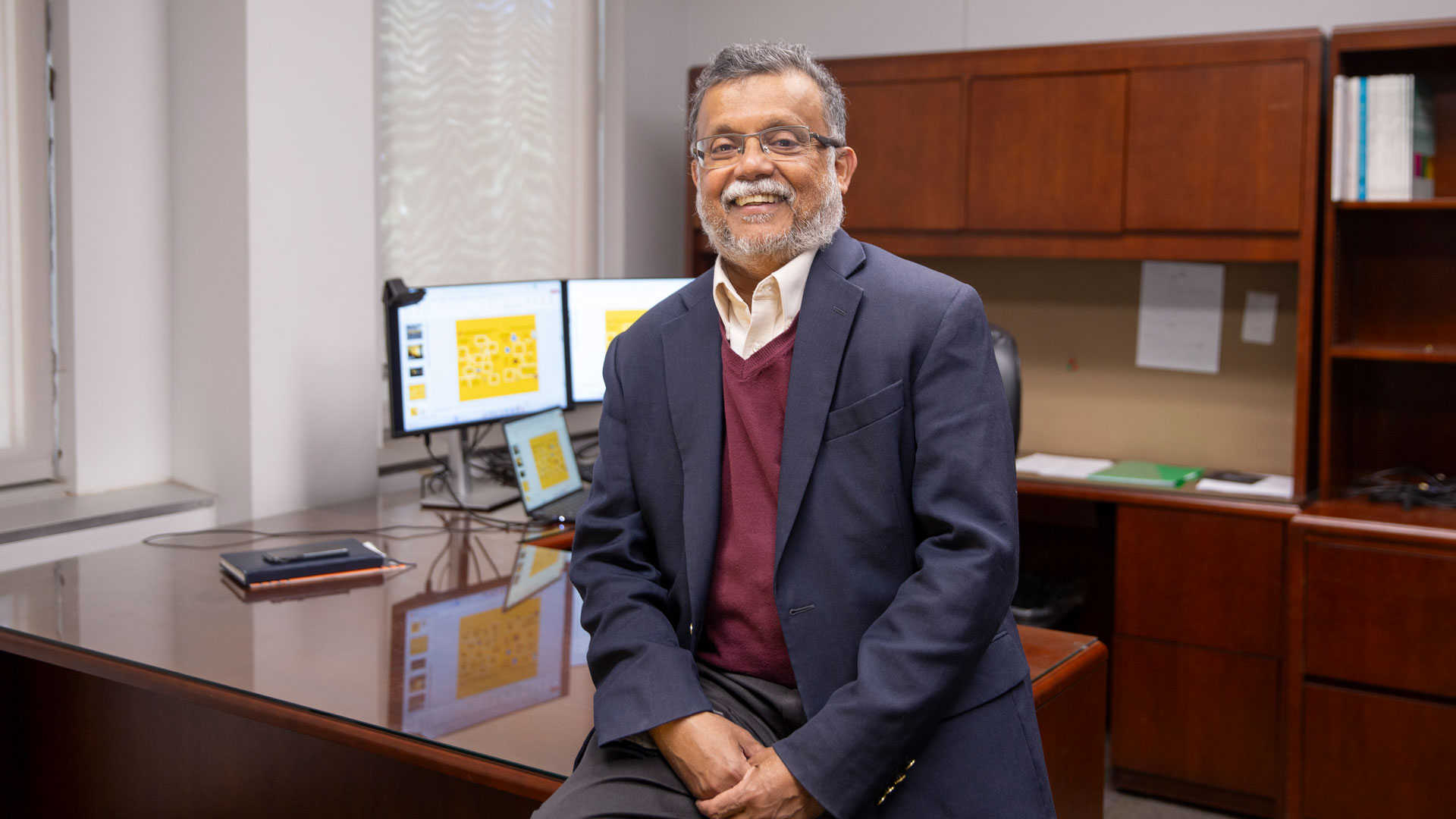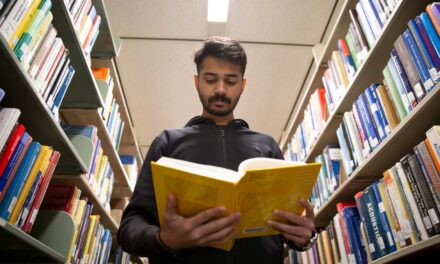
Anthony Waas named director of ASU’s School for Engineering of Matter, Transport and Energy
New school director aims to apply an interdisciplinary approach to training future engineers

Anthony Waas aims to train leaders who will create the future by optimizing engineering education. To accomplish such a goal, Waas stepped into his new role as director of the School for Engineering of Matter, Transport and Energy, part of Ira A. Fulton Schools of Engineering at Arizona State University.
He came to ASU because he considers the university a nimble, adaptive and collaborative institution. Waas, a professor of mechanical and aerospace engineering, plans to leverage ASU’s interdisciplinary nature to continue the school’s tradition of innovation in training the next leaders, trailblazers and world-class engineers.
“Tony has a demonstrated record of rigorous academic inquiry, practical innovation and leadership that has advanced the community’s understandings of aerospace engineering in general, and with a range of specific contributions concerning lightweight material composites and advanced manufacturing,” says Kyle Squires, ASU’s senior vice provost of engineering, computing and technology and dean of the Fulton Schools. “But beyond the rich contributions he’s made to his fields of study, I am most eager to collaborate with Tony, harnessing his insights and expertise to explore new ways to enhance interdisciplinary engineering education and research opportunities that promote access to all learners seeking SEMTE programs and others across the Fulton Schools.”
Journey to the Valley of the Sun
At ASU, Waas plans to bring people together to create innovative technologies that will make Arizona and the world a better place.
“In one part of the Fulton Schools, we have chemical engineering, materials science and engineering, mechanical engineering, aerospace engineering and a program in bioengineering: biological design,” he says. “That interdisciplinarity is a huge opportunity for people to collaborate and create amazing things.”
Waas also believes that incorporating artificial intelligence, or AI, into education could revolutionize how we teach and develop the next generation of engineers.
“AI is going to impact engineering,” he says. “We have a distinct opportunity to initiate programs that build on our strengths and have AI as a significant component in advancing the technologies our faculty and students are working on.”
Waas intends to leverage the strengths of the School for Engineering of Matter, Transport and Energy to develop a plan that will push the boundaries of the school’s research capabilities. He also aims to increase publicity of the research happening in the school and improve students’ access to education.
“We already have the only ABET-accredited online undergraduate bachelor’s degree program in mechanical engineering, and I intend to enhance access to a diverse group of students from around the world through more online programs,” Waas says.
Waas has an array of academic and career accomplishments. After graduating from the California Institute of Technology with his doctoral degree in aeronautics and applied mathematics, Waas taught aerospace engineering at the University of Michigan from 1988 to 2014. He served as the Felix Pawlowski Collegiate Chair Professor before joining the University of Washington, or UW, as chair of aerospace engineering.
In his time at UW, Waas set up a laboratory for students to build, launch and deploy satellite CubeSats and doubled the number of undergraduate degrees awarded in aerospace engineering.
“I connected the student rocket team to Blue Origin, which sponsored much of the rocket activities in the student labs, and the University of Washington won the national competition for students building rockets to go to low Earth orbit,” he says.
In 2015, Waas was named chair of UW’s William E. Boeing Department of Aeronautics & Astronautics. Inspired by how Boeing was using robots to manufacture the largest winged vehicle, the Boeing 777 airplane, Waas pioneered the use of robotics in the manufacturing of aerospace materials at the university. With new computational methods to analyze robotically manufactured composite structures, he was instrumental in obtaining state funding to set up an advanced manufacturing facility at UW.
In 2018, Waas went back to the University of Michigan to become chair of the aerospace engineering department, where he worked with faculty members to understand the future of the field.
“We interviewed leading experts in industry, government labs and academic departments and identified five areas that will shape the future of aerospace engineering, including sustainable engineering and space technology,” he says. “You can’t get the carbon footprint down by using traditional combustion cycles. You need to look at alternatives like synthetic aviation fuels, or SAFs, that are plant-based and develop modern combustion engines while producing low emissions.”
An expert in lightweight material composites, Waas’ research aims to make aerospace manufacturing more economical and efficient. His work has been recognized with numerous best paper awards.
In 2016, Waas received the American Institute of Aeronautics and Astronautics Structural Dynamics and Materials award, known as the AIAA SDM award, for his outstanding research in structures and materials. His impact on composite structures research and educating the next generation of engineers won him the 2017 American Institute of Aeronautics and Astronautics–American Society for Composites James H. Starnes Jr. Award.
Waas was elected to the Washington State Academy of Sciences in 2017 and European Academy of Sciences and Arts in 2018. He also won the 2020 AIAA Integrated Computational Materials Engineering Prize and the American Society of Mechanical Engineers Warner T. Koiter Medal. Waas is a member of the National Academies of Science, Engineering and Medicine’s Aeronautics and Space Engineering Board, where he helps make policies that address aerospace issues of national importance.
Cultivating excellence
When he evaluates his success decades in the future, Waas will measure his legacy at ASU by how successful the current class of students will be.
“The biggest success for me would be that the students who came here during my time are not only leaders, but speak very highly of their time here,” he says. “They tell people that they came and got out with a different perspective on life, that they were well-trained engineers who could go out with confidence and do things well. To me, that would be a huge success.”
Waas also aims to inspire his staff and faculty to perform their best and be excited about their work.
“I hope they say, ‘It was a wonderful experience! We all worked hard, and it was not easy, but we had fun and really transformed the place. We are not surprised that ASU has one of the leading public engineering schools in the world,” he says.
Terry Alford, an associate director and professor in the School of Engineering of Matter, Transport and Energy, who formerly served as interim director, expresses his enthusiasm about Waas’s new role.
“Tony is a distinguished figure in aerospace engineering and brings to the School of Engineering of Matter, Transport and Energy a wealth of leadership experience. Staff and faculty members look forward to collaborating with him to move our school forward,” says Terry.



































